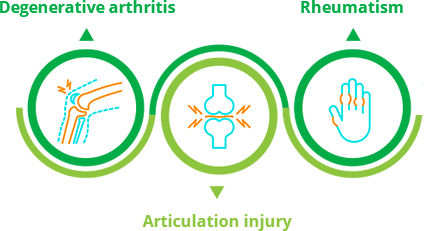Stem Cell Treatment & Research Institution
Cartilage.

What we have achieved so far.
– STRI verified differentiation of chondrocyte and osteoblast from nEPS
– STRI checked up Computed Tomography (CT) scan to cure inflammation of articulatio genu after stem cell clinical treatment of arthritis patient.
Cartilage-related disease program
Cartilage is an important structural component of the body. It is a firm tissue yet is softer and much more flexible than bone.
Cartilage is a connective tissue found in many areas of the body including:
– joints between bones e.g. the elbows, knees and ankles
– Ends of the ribs
– Bronchial tubes or airways
– Ears and nose
– Between the vertebrae in the spine
Cartilage is made up of specialized cells called chondrocytes. These chondrocytes produce large amounts of extracellular matrix composed of collagen fibers, proteoglycan, and elastin fibers. There are no blood vessels in cartilage to supply the chondrocytes with nutrients.
Can Stem Cells Regenerate Cartilage?
Mesenchymal stem cells (MSCs) can naturally transform into many tissues including bone, cartilage, and fibrous tissue. There are hundreds of studies of animal models where these cells have been shown to help repair cartilage.
On Imaging examinations on more than a decade of experience in using stem cells to treat knee arthritis, the patients who normally get the best before and after Imaging examinations results with regard to cartilage healing are those with smaller holes.The following Imaging examinations photos display cartilage improvement after stem cell treatment

01 Trochlear groove cartilage defect treated with stem cells
02 A cartilage lesion under the knee cap treated with cultured cells
03 Improvement in medical compartment cartilage thickness in a patient with only partial thickness loss treated with same day stem cells.